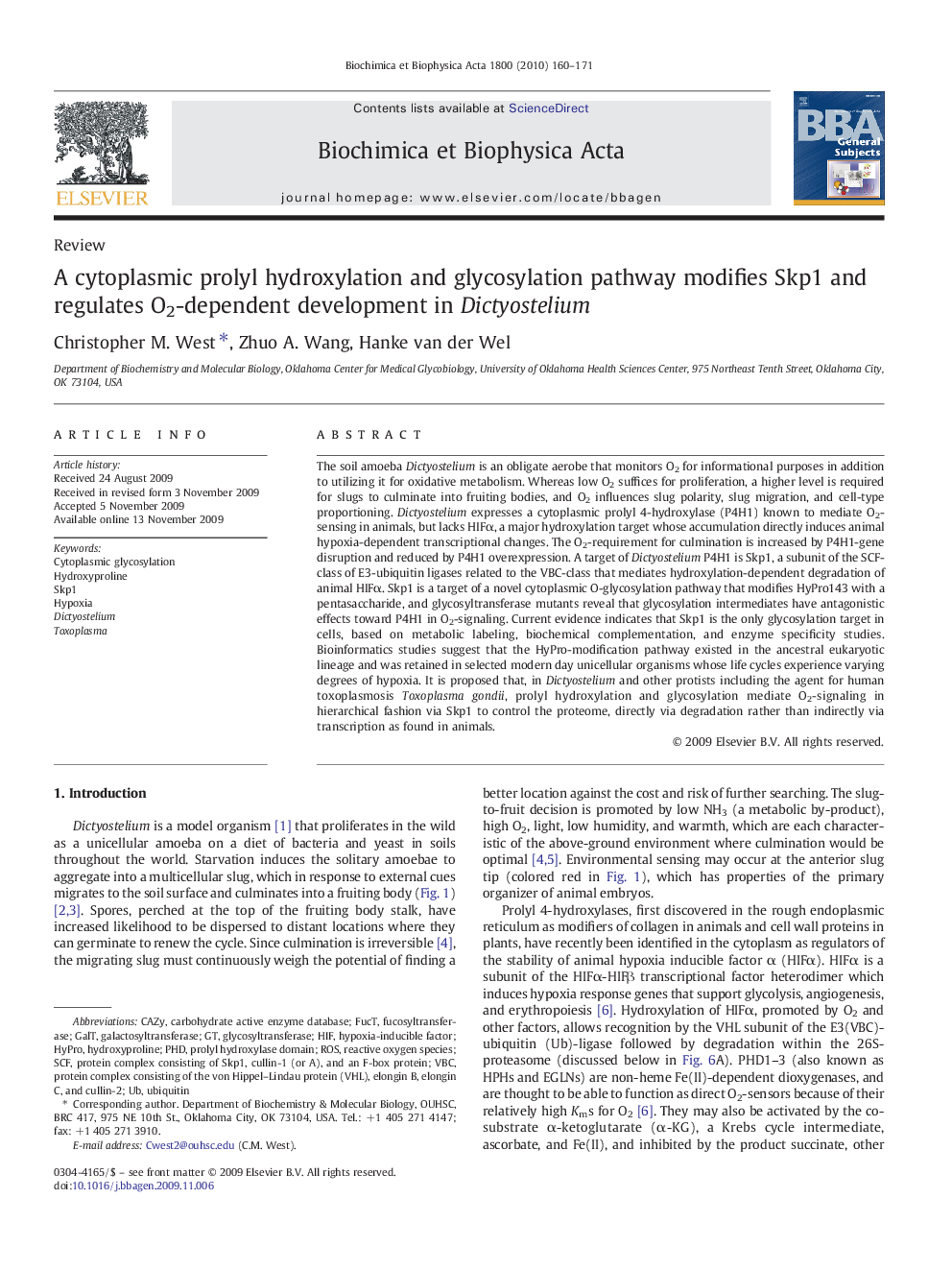| کد مقاله | کد نشریه | سال انتشار | مقاله انگلیسی | نسخه تمام متن |
|---|---|---|---|---|
| 1948032 | 1054671 | 2010 | 12 صفحه PDF | دانلود رایگان |

The soil amoeba Dictyostelium is an obligate aerobe that monitors O2 for informational purposes in addition to utilizing it for oxidative metabolism. Whereas low O2 suffices for proliferation, a higher level is required for slugs to culminate into fruiting bodies, and O2 influences slug polarity, slug migration, and cell-type proportioning. Dictyostelium expresses a cytoplasmic prolyl 4-hydroxylase (P4H1) known to mediate O2-sensing in animals, but lacks HIFα, a major hydroxylation target whose accumulation directly induces animal hypoxia-dependent transcriptional changes. The O2-requirement for culmination is increased by P4H1-gene disruption and reduced by P4H1 overexpression. A target of Dictyostelium P4H1 is Skp1, a subunit of the SCF-class of E3-ubiquitin ligases related to the VBC-class that mediates hydroxylation-dependent degradation of animal HIFα. Skp1 is a target of a novel cytoplasmic O-glycosylation pathway that modifies HyPro143 with a pentasaccharide, and glycosyltransferase mutants reveal that glycosylation intermediates have antagonistic effects toward P4H1 in O2-signaling. Current evidence indicates that Skp1 is the only glycosylation target in cells, based on metabolic labeling, biochemical complementation, and enzyme specificity studies. Bioinformatics studies suggest that the HyPro-modification pathway existed in the ancestral eukaryotic lineage and was retained in selected modern day unicellular organisms whose life cycles experience varying degrees of hypoxia. It is proposed that, in Dictyostelium and other protists including the agent for human toxoplasmosis Toxoplasma gondii, prolyl hydroxylation and glycosylation mediate O2-signaling in hierarchical fashion via Skp1 to control the proteome, directly via degradation rather than indirectly via transcription as found in animals.
Journal: Biochimica et Biophysica Acta (BBA) - General Subjects - Volume 1800, Issue 2, February 2010, Pages 160–171